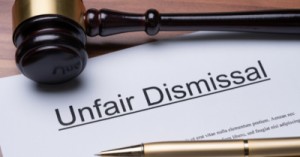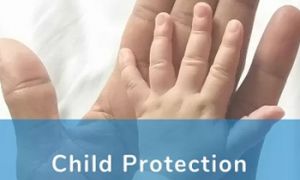In light of ongoing reforms to Working with Children Check legislation across Australia, especially following serious child safety breaches, early childhood education (ECE) centres are called to rethink how safeguarding is embedded into everyday practice.
Beyond regulatory checks, recognising and responding to grooming behaviours is pivotal to protecting children’s well-being—something deeply anchored in EYLF Outcome 3: Children have a strong sense of well-being.
This guide supports educators to develop professional judgment, apply trauma-informed thinking, and foster environments where all children feel safe, secure, and respected.
What Is Grooming—and Why Should Educators Be Aware?
Grooming refers to behaviours that perpetrators use to gain access to and manipulate children—and sometimes adults—without arousing suspicion. These patterns are often subtle, relational, and contextual, making early detection a matter of professional vigilance.
ECE staff, especially those working closely with children under five, are uniquely positioned to notice early warning signs—if equipped with the right mindset and tools.
EYLF Alignment: Outcome 3
"Children are safe, secure, and respected"
Educators contribute to this outcome by:
-
Building secure attachments with children
-
Observing and responding to changes in behaviour
-
Promoting safe environments and ethical relationships
-
Acting with professional responsibility when risk is suspected
Adult Behaviours to Watch For
| Category | Concerning Signs |
|---|---|
| Boundary Testing | Repeated attempts to be alone with a child without valid reasons. |
| Over-Familiarity | Giving gifts, pet names, or using excessive physical contact. |
| Targeted Engagement | Excessive focus on one child with no professional rationale. |
| Rule Avoidance | Suggesting exceptions to privacy or supervision policies. |
| Staff Grooming | Flattering or isolating educators to build trust and reduce scrutiny. |
Child Behaviour Indicators
| Age Group | Possible Signs |
|---|---|
| Infants/Toddlers | Distress around certain adults, regression, clinginess, sleep disturbances. |
| Preschoolers | Sexualized play or language, anxiety during transitions, sudden behavioural changes. |
These behaviours don’t confirm abuse but may signal discomfort or emotional distress that warrants attention.
Actions for Early Intervention
-
Document Patterns Promptly: Use secure platforms like Appsessment to log concerns and observations.
-
Safe Conversations: Honour children’s voice using developmentally appropriate language.
-
Reflective Supervision: Discuss emerging concerns with leadership regularly.
-
Team Scenario Discussions: Build educator confidence with role-play and case study reflections.
-
Escalate: Follow your service’s child protection reporting protocol without delay.
In an era where compliance is expanding to include cultural and emotional intelligence, resources like these serve not only as educational aids but as safeguards. The guide empowers educators to move beyond passive checks and take active steps toward child safety.
Further Reading
NSW to Tighten Child Protection Laws: Appeals for Denied Working With Children Checks to End







 As an Educator in Australia, your pay rate falls under the Children’s Services Award 2010. This award states the minimum amount that an employer can
As an Educator in Australia, your pay rate falls under the Children’s Services Award 2010. This award states the minimum amount that an employer can When working as a qualified Early Childhood Teacher (with a university degree) within a service, your rate of pay will come from the Educational Services
When working as a qualified Early Childhood Teacher (with a university degree) within a service, your rate of pay will come from the Educational Services When working as a Diploma Qualified Educator your pay rate is from the Children's Services Award 2010. This Award states your minimum rate of pay
When working as a Diploma Qualified Educator your pay rate is from the Children's Services Award 2010. This Award states your minimum rate of pay When working as a Cert 3 Qualified Educator, your pay rate is from the Children's Services Award 2010. This Award states your minimum rate of
When working as a Cert 3 Qualified Educator, your pay rate is from the Children's Services Award 2010. This Award states your minimum rate of Educational Leaders play a crucial role in their early childhood service by ensuring that the educational program aligns with best practices and supports the holistic
Educational Leaders play a crucial role in their early childhood service by ensuring that the educational program aligns with best practices and supports the holistic In early childhood education and care, ratios are more than a technicality—they are a frontline safeguard. Every child deserves responsive supervision, emotional connection, and developmental
In early childhood education and care, ratios are more than a technicality—they are a frontline safeguard. Every child deserves responsive supervision, emotional connection, and developmental With the new national child safety reforms kicking in on 1 September 2025, early childhood services like yours have a real opportunity to lead the
With the new national child safety reforms kicking in on 1 September 2025, early childhood services like yours have a real opportunity to lead the Here’s a comprehensive Mobile Phone and Smart Watch Policy tailored for early childhood education and care (ECEC) services in Australia, aligned with the latest 2025
Here’s a comprehensive Mobile Phone and Smart Watch Policy tailored for early childhood education and care (ECEC) services in Australia, aligned with the latest 2025 The Sea of Fish Challenge is a national initiative that invites children, educators, families, and communities to create and display fish artworks as a symbol
The Sea of Fish Challenge is a national initiative that invites children, educators, families, and communities to create and display fish artworks as a symbol Across the early childhood education and care sector, educators are sounding the alarm: current staffing ratios are insufficient to deliver safe, meaningful, and developmentally appropriate
Across the early childhood education and care sector, educators are sounding the alarm: current staffing ratios are insufficient to deliver safe, meaningful, and developmentally appropriate


